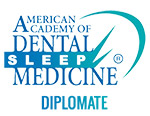 Temporomandibular joint disorder—usually called TMJ or TMD–impacts the joints that hinge the lower or mandibular jaw and the temporal bone of the skull. You can locate these joints easily by placing your fingers on either side of your face just in front of your ears. Open and close your mouth a couple of times and you’ll feel these joints working. When functioning properly, the temporomandibular joints allow you to open and close your mouth smoothly, so you can speak, eat, laugh and yawn. However, a malfunctioning joint can cause pain and discomfort. Fortunately, treatment for TMJ in State College is as close as the dentist’s office. Dr. Donald Marks will be able to determine whether or not you have TMJ and treat accordingly.
Temporomandibular joint disorder—usually called TMJ or TMD–impacts the joints that hinge the lower or mandibular jaw and the temporal bone of the skull. You can locate these joints easily by placing your fingers on either side of your face just in front of your ears. Open and close your mouth a couple of times and you’ll feel these joints working. When functioning properly, the temporomandibular joints allow you to open and close your mouth smoothly, so you can speak, eat, laugh and yawn. However, a malfunctioning joint can cause pain and discomfort. Fortunately, treatment for TMJ in State College is as close as the dentist’s office. Dr. Donald Marks will be able to determine whether or not you have TMJ and treat accordingly.




